Disney+ - Us again : We were at the press conference
By Mulder, Los Angeles, 02 june 2021

Us Again is an American 3D animated short film directed and written by Zach Parrish and distributed by Walt Disney Studios Motion Pictures. Attached to theatrical prints of Raya and the Last Dragon, the short was released on March 5, 2021.
Derek Hough: Hi, everyone. I am sorry about that late response. I'm Derek Hough, and welcome to the Us Again virtual press conference. We are here to meet the filmmakers behind Disney Animation's first new theatrical short in five years, Us Again. I just have to say, I-I watched this, and it is the most beautiful piece, and I just can't wait for you all to see it. Us Again is set in a vibrant city pulsating with rhythm and movement where an elderly man and his young-at-heart wife rekindle their youthful passion for life and each other on one magical night. The years fade away as the joy of dancing propels them across the exciting cityscape of their youth and revives fond memories and ambitions. The short made its theatrical debut alongside Raya and the Last Dragon, and it comes to Disney Plus this Friday, June 4th. You-you can't miss this. It's so good. Today, uh, we're going to get a behind-the-scenes look at the making of Us Again from Director Zach Parrish and Producer Bradford Simonsen. Then we'll take your questions. And at the very end, we got a special live performance from Keone and Mari Madrid. First, please say hello to our panelists. First up, we have Director Zach Parrish, also directed the animated short, Puddles, for Disney Animation's short circuit program, now airing exclusively on Disney Plus. Prior to that, he was head of animation on the Oscar-winning Big Hero 6 and supervising animator on Wreck-It Ralph among many more credits as animator. Producer Bradford Simonsen has served as associate producer on two Oscar-winning features, Big Hero 6 and Zootopia, as well as the Oscar-nominated film, Ralph Breaks the Internet. Acclaimed composer Pinar Toprak has written music for superhero sagas, such as Captain Marvel. By the way, she was the first female composer to score a Marvel film, so that's amazing, and also Justice League, for television shows, including Krypton and all composed at Pixar SparkShort, Purl, and for the online gaming hit, Fortnite, that small game. Choreographers Keone and Mari Madrid are award-winning choreographers, dancers, directors, and they are also spouses and parents. They have starred in and choreographed music videos for Justin Bieber and collaborated with Billie Eilish, K-pop sensation BTS, Ed Sheeran, and many, many more. They have appeared on World of Dance, So You Think You Can Dance, and Dancing with the Stars. Most-most recently, Keone and Mari co-created, directed, and choreographed and starred in their first off-Broadway theater show, Beyond Babel, which received two Drama Desk Award nominations. Thank you all so much, uh, for being here. Before we get into questions, let's hear from Zach and Bradford, who will give us a brief behind-the-scenes look at the making of Us Again.
Zach Parrish : All right. Hi, everybody. my name is Zach Parrish, like Derek said. I'm the writer and director of Us Again.
Bradford Simonsen : And I'm Brad Simonsen, the producer of Us Again. We're excited to walk you through a little bit of the making of Us Again, Disney's first-Disney Animation's first theatrical short in five years.
Zach Parrish : So we're gonna pull up a little presentation here. I think you guys can all see it. Here we are. So the idea behind Us Again, it started,] a few years back when I was starting to feel some, uh, physical signs of aging. Now, I know that I'm not that old, but it really snuck up on me. I-it kind of surprised me, so I was-I was feeling this desire to have my younger self back again or-or to go back in time to a part of my life that I felt like I had lost. But I would have these conversations with my mother, who, uh, was in her 60s at the time, and she would talk about all the cool things that she was gonna do when she grew up. And-and every year on her birthday, my wife would always, you know, talk about, "Oh, I can't wait to grow up," and it really made me stop and think about my perspective, uh, on aging and-and where my focus was. And I realized that if I spent all of my time focused on the past, then I was gonna miss the beauty in the-in the present. And that really started to become the thematic premise for this film. And as I started digging into that idea and thinking about the main characters for the film, uh, I realized that I had this dichotomy within my grandparents in my family. Uh, on the one side, uh, I had a set of grandparents named Art and Dot, who the characters are actually named after and when they retired, they sold their home, they bought an RV, they traveled the entire country, they went to every national park, they followed their passions, and they got out and they kept moving. Uh, and on the other side, I had a set of grandparents who I was incredibly close with. they w-they were a little more homebody, especially my grandfather, who was a lot more sedentary. And-and so with that dichotomy, I felt like I had the beginnings of-of a story. And-and I felt like I could tell a story about an older couple who-who showcase this-this dichotomy, and have this amazing fountain of youth experience. And so I started thinking about, uh, interesting mechanisms that we could use for that fountain of youth, and I thought it'd be really cool if it could be, uh, a magical rainstorm. Now-now Disney doesn't have the-the happiest history of rain in its films. Uh, it tends to be used to exaggerate the low moment for a character, but, uh, I grew up in the Midwest, and so to me, playing in the rain is sort of, uh, peak youthfulness. and as I thought about a couple playing or dancing in the rain, uh, it felt like peak romanticism as well. And so, uh, it felt like we could use that rain to also raise the stakes of the film since rain is temporary much like-like youth is. And-and as a huge fan of-of dance and dance shows, uh, I quickly fell in love with this idea of this newly young couple dancing across the town in the rain and painting the city red, as-as I started... But as I started thinking about the main character, Art, who is-who's a little bit of a curmudgeon, he kind of feels like his best days are behind him, I thought, well, wouldn't it be cool if the whole world was one of dance where it isn't something that you go and do but how you do everything? And if-if I was this guy who felt like my best days were behind me, wouldn't I feel even more isolated in a world like that? So that really allowed us to use dance as a mechanism to exaggerate the entire world and a way to show a-a youthful spirit. Uh, and then that-all of that combined really sparked a memory of-of two of my favorite dancers that I fell in love with-with years ago, uh, who you just met, Keone and Mari. I saw a video of them back in 2015 on YouTube, uh, and I fell in love. I have, uh, I've marveled at their-at their storytelling and characters they create, their athleticism, but also the deep connection that you feel between the two of them. And-and to me, their style of dance has this amazing way of blending styles from the past and the present, which really fit thematically into this film. Uh, and so from the beginning of the project, uh, as I was pitching it, they really were the example I was using as how I felt like we could create this world of dance.

Bradford Simonsen : As Zach constantly pointed to Keone and Mari as the example, so I said, Why don't we just give them a call and ask them to come in? So we reached out to them. They agreed to come in for a conversation, and we knew immediately that they were the perfect partners for this film. They had great story ideas, character ideas, and they saw our world of dance entirely of their artform perfectly clearly, and they were so excited. Then we had a bit of a chicken and egg problem. In order to tell the story, we needed choreography. In order to tell the-to do the choreography, we needed the music. And in order to write the music, we needed the story. Pinar Toprak, our composer who wrote the score for Captain Marvel, joined us early and explored themes for Art and Dot. And she even wrote a five-minute temp score for screening based on just an outline that Zach wrote. No one discipline led this dance. They were all interconnected.
Zach Parrish : And yeah, I'm-I'm a huge fan of-of this-th-the genre of soul and funk, and I really felt like it was the type of music that we could use to-to elicit the feeling of music that, uh, Art and Dot may have listened to, you know, in their younger days but also something that could be on the radio today and again, kind of have that-that then and now feel. And-and fortunately for us, you know, Pinar, uh, loves soul and funk, and she really brought the entire film to life. So what would happen is Pinar would write the temp music, and we would share that with Keone and Mari as we continued to refine the story, and we went back and forth like that. Uh, and then once the story was finally-was finally approved, we did a final pass the music, and then we could really start planning for our reference choreography. Uh, and that process looked like it probably would today. Uh, I sat in my office, and I shot a video, uh, uh, where I would kind of walk them through the general staging, the general blocking and what these characters were saying to each other and what we came to call their-their conversations and what the dance needed to represent. And from there, Keone and Mari would send us back videos of what they were thinking and the choreography that they were coming up with, and then after I picked my jaw up off the floor, uh, we would go back and forth and-and collaborate in that way until, you know, we kind of saw the end of that chicken-chicken and egg, uh, problem solved.
Bradford Simonsen : Yeah. Our amazing animation team took the reference choreography to the next level, elevating it to something very special. Then our TechAnim team did the cloth and hair simulations but also transformations. Our characters go from old to young, young to old, their hair grows in, it disappears, they get sunspots and wrinkles, all while draped in wet clothes [LAUGH]. Our crowds team created 1,400 unique characters to dance through the backgrounds of our city. They really-we really wanted to feel like the world was young, grooving, and thriving. Then as if it wasn't enough complexity, we covered it all in rain. There is falling rain. There are drips running down characters in environments. There's a lot of rain in this little film, and the FX team made it look as if it was real.
Zach Parrish : And for the lighting, it was-there was always something really important to me about using lots of colored light and neon light, again, sticking with that-that then and now feel to the entire film. And our lighting and [stereo?] teams, uh, really made it feel really real, really visceral, and-and-and really immersive. so that's just a very quick, brief look, uh, behind the scenes of Us Again. thank you guys so much for being with us today. this film was a real labor of love, and we are, we're incredibly proud to-to get to bring it to the world. Thank you.
Derek Hough : Oh, man. Thank you, guys, so much. Thank you, Zach and Bradford. m-I-I just want to say that last image just right there we saw, I mean, I literally-I-I'm tearing up right now looking at it. after seeing the short, it's just so powerful and just images, uh, man, anyways. I'm such a sap [LAUGH]. but it's so b-it's so powerful. I mean, just the way they move through the city and the energy and the lighting and the-just the dancing, the... everything about it is just perfection. It's beautiful. well, I want to wakum-welcome back all the panelists so we can ask some questions. We're gonna lead some questions here in the Q&A, and we'll do our best to answer as many as we can. So, uh, remember also, after the Q&A, stay tuned for a very special live performance right now from Keone and Mari, which, uh, will be very, very exciting. So, all right. Zach, Bradford, and Pinar and Keone and Mari, I've got a few questions of my own just to get us started. Uh, Zach, the-the dance and music all tell a story. They tell a-a lot of story in this-in-in Us Again. And, but why did you choose to go that route instead of using dialogue? You went more about just the dancing and the movement rather than dialogue. Why'd you go that route?
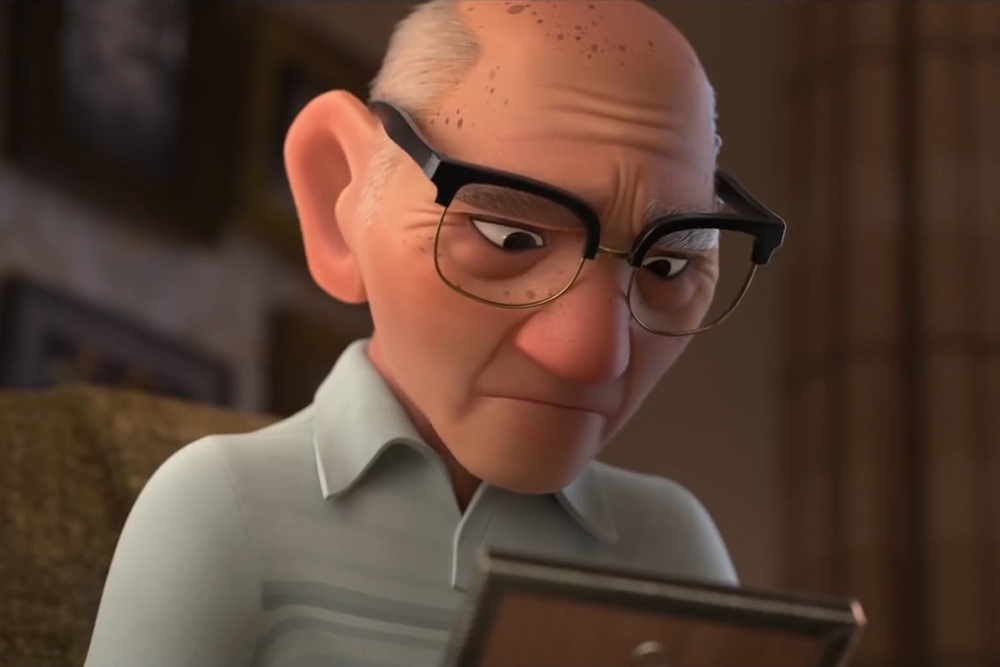
Zach Parrish : That's a great question. you know, I've always been a huge fan of dance. Ever since I was little, my mom would take me to-to go to local theater, or we would, uh, drive to Chicago to go see, you know, Broadway shows in-in Chicago. and so I've always been in love with-with theater and kind of the-the exaggeration that dance and theater bring to-to storytelling. and so I've always wanted to tell a story through dance, and as I started thinking about this story in particular, you know, i-it always had kind of this, uh, you know, act II montage dancing across the city as they become young. And then it just-it really felt like I just don't think we need to say anything. I think we can let their bodies say everything that they need to say. And then the conversations that we had with Pinar is like, "And then we need the music to be that-that accompaniment so that everything that they're saying to one another is just foley through that," which kind of harkens back to, uh, to Fantasia, which is also one of the huge influences for this film and something that-that Pinar and I talked about very early on as well as I wanted to feel like, you know, uh, Fantasia 2000, you know, the, uh, Rhapsody in Blue short is one of my favorites. And there's so much story and so much acting and zero dialogue. And I-to me, that actually hits harder emotionally, just like dance and theater often does for me.
Derek Hough : Oh man, y-you nailed it. It was so good. Brad-Bradford, you touched on this quickly, so let's go back a little bit, but you had cityscapes, rain, uh, crowds, neon lights. Tell us more about how the talents of the Us Again crew combined to create this film.
Bradford Simonsen : Oh man. Uh, you know, from the very beginning, we knew that we would have a very large appetite, that we really wanted to make something that felt theatrical, right, because this is that-that theatrical short that we're being allowed to make. And it's a privilege to-to do that for Disney Animation. So honestly, we just hired the right people. Within-within Disney Animation, we crew up, and we-we picked people that-that wer-you know, really felt like they-we could say yes. We'd say, "Wow, this is gonna be hard. How are we gonna do it? We don't know yet, but we can." And that team just kept raising the bar. Like every time, we'd be like, "Okay, we're gonna do transformation," and then, uh, one of our teammates would go off and-and do a test and come back, and Zach would go, "Yeah, that's exactly-do this, do that." So it was really a combination of all that talent coming together and saying basically, "We can. We can do this." And we just kept raising the bar, especially when-when the team got to see Keone and Mari's, you know, YouTube videos [LAUGH] and then hear, uh, Pinar's soundtrack, it really, like I said, it wasn't one thing that led it. It was all of us inspiring each other... to really make a beautiful movie.
Derek Hough : Yeah. I mean, I could-I could just see the animators' faces, you know, when they're watching Keone and Mari dance. They're like, "All right. Oh, cool. This is, you know, almost quite fun, and difficult and challenging." Uh, Pinar, as Zach and Bradford shared, you know, the-the collaboration between music and story was unique in this story. Uh, what was this experience like for you, especially since the music was such a huge part of this-of this story?
Pinar Toprak : It-from the start, honestly, it's been one of the most rewarding experiences of my life because I've never been involved in something from, you know, that early on and every step of the way. Sometimes I get hired on things to write some themes, you know, during script, and then I don't hear from them. They go off, do their thing, and then I, you know, come back near the end, but this was just, I mean, it really was like we were all kind of dancing together throughout the whole process it really felt like. and the fact that we didn't have dialogue meant that every note mattered, uh, every choice mattered, every instrument mattered and-because they-their conversation happens through different instrument choices and different things, and, uh, and-and knowing how it was going to look. I mean, he-you know, th-the dances just, the choreography is so incredible. I would keep seeing evolutions, throughout, and that just kept inspiring me more, so-until the end. I've-I've seen it at this point, I don't know, three billion times, and I still cry at the end, so [LAUGH]. It's a special film.
Derek Hough : Oh my goodness. Well, it-it was beautiful, and obviously being a dancer and choreographer, like just the textures, the nuances and everything just, yeah, you just nailed it. So beautiful, which remi-brings me to Keone and Mari. Hi, you two. Um...
Keone Madrid : Hi, Zach.
Derek Hough : Oh man, just so happy for you and just-just in awe of you always. how was choreographing, you know, on this animated project different from all the other projects you guys have been a part of?
Keone Madrid : Man, you know, I feel like we, like everyone else, uh, such a rewarding experience, a-a dream, all of the things that, you know, not just doing this piece but also feeling like we're representing dance. obviously dance, uh, having the opportunity to have a really strong marriage in this piece, uh, was huge. And it was-it made us emotional to know that we had that responsibility to-to represent dance but also so proud that, yes, like, dance has come so far. And-and look what it's doing. And-and, and just to do with all the amazing people, you know, the-the experience was just as amazing as the final product. And, uh, couldn't have asked for a better project really.
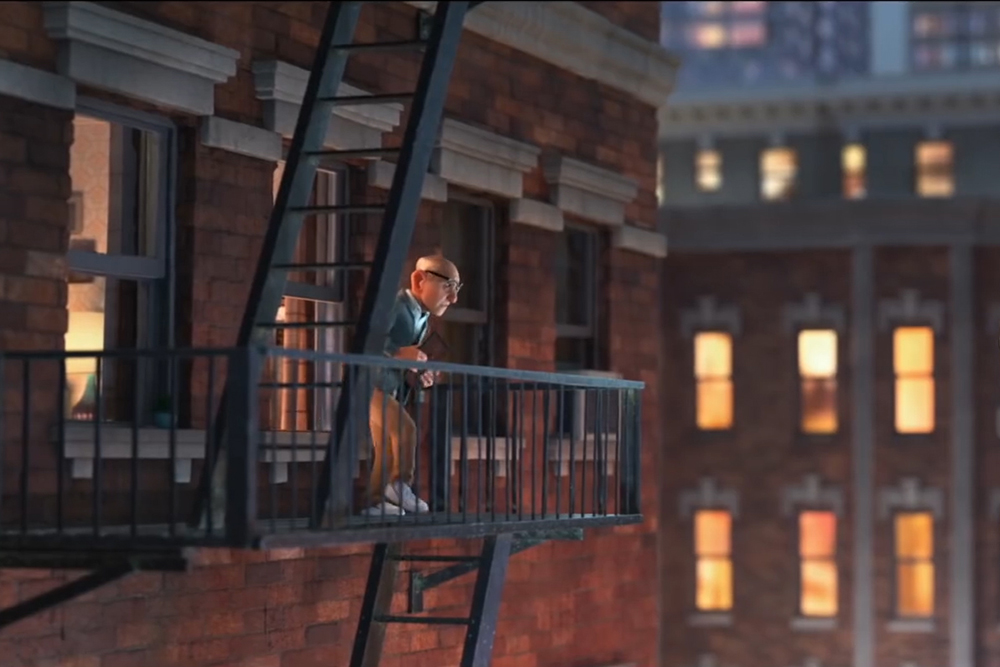
Mari Madrid : Yeah, yes. All of that
Derek Hough : It's funny. When you guys-when I heard you guys were gonna be a part of this, I was like, "Uh, yeah, that'd-o-of course."
Derek Hough : Like, it was perfect. you know, I think it was just like a-it just was a perfect, uh, collaboration I think that it just happened, so I'm just-I'm so happy for you guys. and just again, nailed it. I-I can't say more good things about this obviously. This is I think a perfect-this is a perfect short for me with the dancing and the music and the visuals and the stor-I mean, so I'm just a big fan right now. but enough about me. Let's talk about [LAUGH] let's take some questions, uh, from the reporters. this one is for Zach. You mentioned the inspiration for the short came from your personal experiences of getting older and learning from your mother that youth really is a state of mind. What did she think about Us Again when she watched it?
Zach Parrish : [LAUGH] Ah, well, now I'm gonna cry. you know, my mom... it was hard because they live in-in the Midwest, and-and s-they don't really get to see it very often. And so, she really didn't get to see it until it was done, and she bawled her eyes out. and it was-it was awesome. sorry. Uh, she-she was super supportive. She's always been supportive of me pursuing the arts, which was, you know, is always one of those, like, risky things, and when I said I wanted to go to art school and I wanted to be an animator, there was never a doubt for her. So, uh, yeah, it came full circle, and it was-she was incredibly proud.
Derek Hough : well, I mean, I can't wait to show my mom it as well [LAUGH]. I'm sure everybody else as well. this is for Zach and Keone and Mari. Uh, it seems there was a few nods to other classic, uh, dances like Singing in the Rain. Uh, Zach, did you go into this with the-any direction for the choreographers to emulate any specific musicals? Keone and Mari, did you plan to re-uh, reference any specific numbers, or did it just happen naturally during the process?
Zach Parrish : I think the one-the one that we planned ahead for was the-the lamppost scene. Uh, that was-that was very clearly a Singing in the Rain reference that we-that we had all the way back in-in storyboards and we knew we needed to-to tip the hat to that, uh, you know, kind of classic. the rest I feel like was kind of all-all your guys' creation, right?
Keone Madrid : Yeah. I-I mean it's-it's really just the spirit of-of it. obviously, we wanted it to make sense with the story. Them being older characters and what-how they would bring their older personalities into, a modern, uh, you know, piece was really the driving force. So we've-we're al-already naturally so inspired by that era, so yeah, it just came forth.
Mari Madrid : It just happened. Yeah, it just kind of happens. It's just in our, I think, our style and our language so that-that, uh, that essence of it because it inspires us so much and along with so many other modern things, it kind of fuses together and is always present, uh, whenever we're choreographing. But there is a great moment on a fountain, which I think, uh, for me, makes me think of An American in Paris, but I mean, that wasn't planned. [LAUGH] It just...
Keone Madrid : Yeah, reminiscent of for sure.
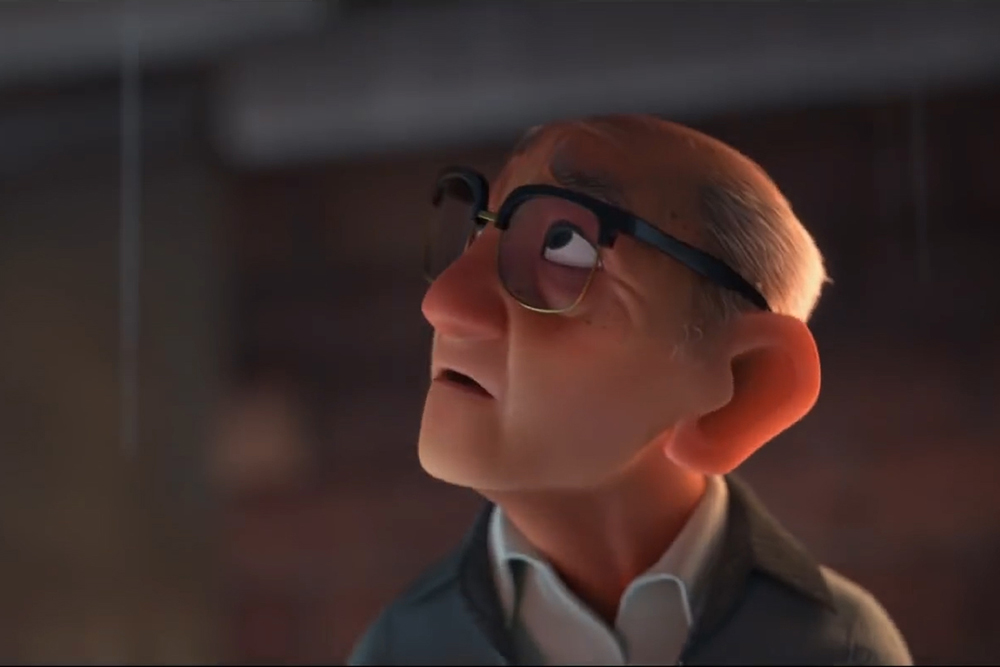
Derek Hough : Yeah, I-I feel like-and I feel like that a lot of times, because that era, there's such a romance to it, right? And I think that as well the way they created with the music and the dance was so integrated, that, you know, you do feel-you do feel those-those heartstrings or those-that nostalgic feel to it. However, I will say though, Keone and Mari, the choreography, it's so unique to your style, to who you guys are, and it's-it-it comes through, and it's-it's always so, um... It was just-it was just beautiful to see because it's so original. Yet, also nostalgic. So, it's a beautiful combination of, uh… You guys just did so beautifully. Pinar, uh, this is for Pinar, what [drew?] you to Us Again? What drew you to this project?
Pinar Toprak :,well, honestly, ev-everything about it. I mean, the-the-I remember the very first meeting with Zach and Brad and, once they started telling me about the story. And, honestly, the fact that it-it had no dialogue was just really interesting to me. And the-the whole thing would take place, basically, through music and dance. I just never have that, you know, that kind of opportunity. That kind of canvas to-to really create. a-a lot of the times, you know, music in a-in a film does say what's not said on-screen. You know? We're trying to underscore, the emotion. But this was full-on, you know, just-just s-say everything with music and dance. You know? so it was just a-it was kind of a no brainer. I was, uh-yeah, I was just so excited to write every single note. It was just such a joy. And I-I really love funk and soul very much. And that's something I don’t get to-chance to do. And, uh, in the music, too, we, just like in-in the, it was done with the-with the dance and everything else was this marriage of all [they knew?]. and we were really embracing like when the, you know, the big swells in the orchestra comes in at the end. Like, we're embracing all of those things and it's just kind of-it was-it was beautiful canvas to write for.
Derek Hough : Is-was your creative approach different between, uh, y-you know, a feature film and a short film? Was there any difference between, you know, working on those diff-those different types of projects?
Pinar Toprak : Absolutely. I mean, there-just like with everything, there is-you're trying to say a lot more [and now?] with less time. Uh, so, you know, it-it-everything really matters and the timing of everything matters. And, uh, I studied Keone and Mari's videos very much. Because I didn’t-I wasn’t-I knew about them. But I wanted to know how they move. Because that was going to dictate how, you know, things were going to kind of pop and move. And just the timing of everything, you know? So, I was trying to get a sense of, oh, I wonder what they would do with this kind of thing. And then-then, I would get the visuals. Like, oh, oh, that's so cool. That's way better than I thought it was. So, it just kept kind of going from there. Yeah.
Derek Hough : So, uh, I-what was-something I noticed obviously was in Us Again, it delivers representation in spades. Uh, you know, was there an active choice to make the leads people of color to help give representation?
Zach Parrish : Yeah, across the board from the very beginning that was always the plan. I'm-I'm in an interracial couple. And so, it was important to me to have [more?] interracial couple. [And so's Brad?]. it was important to me to have an interracial couple on-screen. We were also representing dance in a new way. So that felt important. We're representing age in a new way. So that felt important. So, we really-we really wanted to lean into that as much as we could. and we're fortunate at Disney to have a-a diversity and inclusion group. Both within Disney animation and also within the Disney company. And we go to collaborate across the entire company to-to talk about shared experiences as far as, uh, growing-growing older. And people's parents and grandparents and-and where they come from and how-how views on aging matter. And then, once we-once we decided on the ethnicities for-for Art and Dot, what does that mean? To what is their-what does their house look like? And-and things like that, we really wanted to be as authentic in that representation as-as humanly possible.
Bradford Simonsen : Yeah, and to Zach's point, we actually-that team, was so-we were so grateful to that team because they actually, just like our team here, they went on the journey with us. So, as soon as Zach even had an outline, we-we asked them to come in and have lunch with us. So, we would do lunches, relatively, frequently. And-and ask them. So, literally, as we did character designs, then as we did, the cloth and hair design, when we actually executed that in 3D, we would get feedback. Then, when we did the environments, like Zach said, we would… So, we really wanted to partner with them along the journey and make sure that we were-we were, honoring, you know, everyone appropriately.
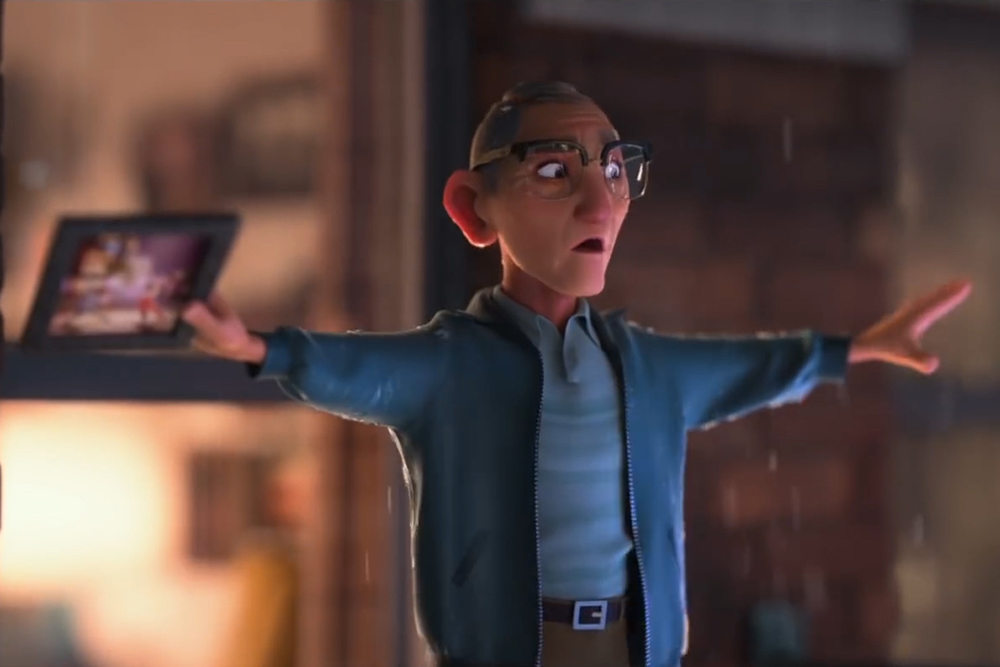
Derek Hough : Yeah, yeah, well I think it-you guys did it beautifully. And-and-and for Keone and Mari, uh, what kind of impact did this story have for you given how, just important, uh, you know, the-the-the physical changes are for dancers? You know, obviously, with dan-being dancers, you know, there's, you know, there-it-there's, uh, the narrative that there's a shelf life, I suppose. But, uh, r-what does this impact have for you guys doing-telling the story? You know?
Mari Madrid : I mean, our goal is to be Art and Dot. Art and Dot. That's the-that's the goal. Is that you wouldn’t have to give up. Y-y-I think there's a-a young part of your mentality in mind when you're a young dancer. Or, [even?] an [athlete?], anybody who's doing something physical and is like, oh, yeah, I can only do this till a certain age. And then I-you give it up. Like, I have to give up something I love because of my age. And I think that's the difference you see between Art and Dot. Dot doesn’t think that way. And Art thinks that way. But it's really-it's a choice that you make. obviously, there's maintenance. you gotta be taking care of. It's not the same.
Keone Madrid : Can't be doing?
Keone Madrid : It can be just like fine wine, man. Like, you can really make some amazing choices. And-and [being?], you know-there's a wisdom to it. And-and that-I think that's what's special about this. And a reminder to ourselves that there is no shelf life to it. It's-it's-it's all in here.
Mari Madrid : Yeah. And-and I think the people that we've seen who, uh, are past the normal shelf life of a dancer, which I think when you're younger, you think it's like 30. When I'm 30 I can't dance anymore. I'm 35 and I'm doing just fine. But I-I see dancers who are like, getting into their '50s or over into passed their '50s. And it's not just their movement. It's their spirit and their love that resonates from them that's so powerful. That it could be one person [thrown on?] a stage in a giant theater. And they can make everyone cry. Because the power of their connection to their art. And, uh, it was just such a-it was such an honor to be able to tell. Like, that's just one layer of the story that resonates. you know, there's so many throughout.
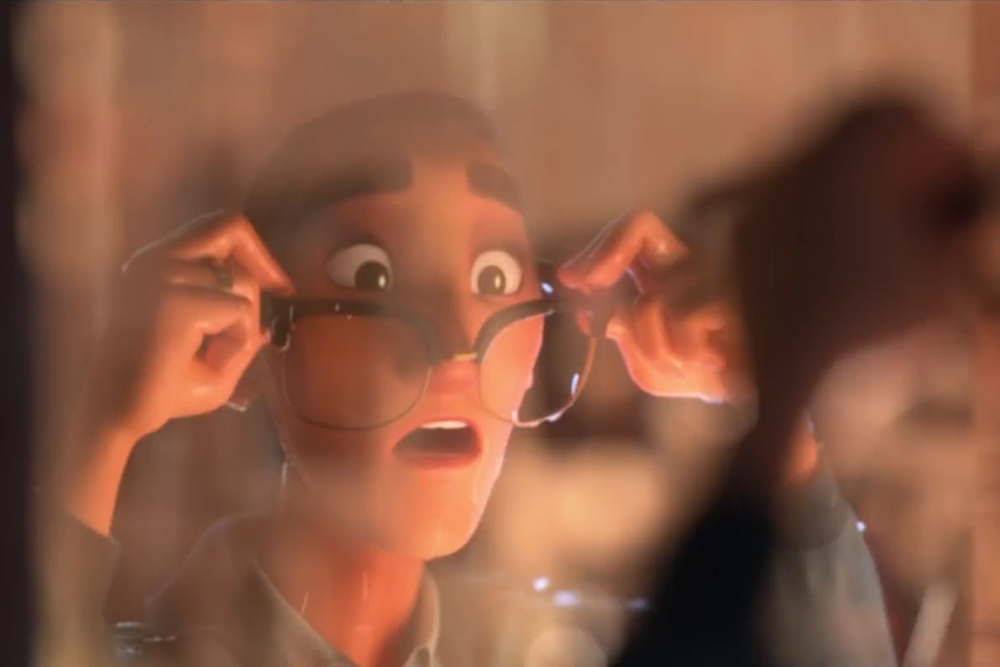
Derek Hough : What's it like-what's it like watching-watching it back and kind of seeing-seeing yourselves in Art and Dot? You know what I mean? Like, in the movements. You're like, why yes, it's like… you know what I mean? 'Cause I know I do. I see it and I'm like, oh, my gosh, that's-that's-I-I-I recognized you guys in the-in their characters, you know. Which is-it's-I think it's really cool.
Keone Madrid : Yeah, you know, it's-it's definitely-it's… At first, there's that first watch of like, oh, my gosh, there's Disney characters doing our choreography. Well And then, once you get past that layer, then you're watching like, two students of yours just destroy your choreography in amazing ways. And, you know, you kind of get jealous. like, man, they do it better than us.
Mari Madrid : Yes.
Keone Madrid : Yeah.
Mari Madrid : But it's so cool. They're, people.
Keone Madrid : Yeah.
Mari Madrid : You know? It's like, e-we choregraph for-I mean, yes, it's us, but it's them, as well. Uh, they have different bodies. They move a little slightly different. And it's crazy to me that people, human beings animated that. [Definitely?], I think that's what blows my mind.
Derek Hough : It's-it's amazing. It's so good. I mean-and-and since this is a short… But there is-there is a lot things we might miss. so are there any things that are not so obvious that we need to look out for when we watch the short?
Zach Parrish : Oh, man, there's-there's a lot-there's a lot hidden in this-in this thing. you know, like I said, there's a lot in Art and Dot's apartment that was-that was really specific. A lot of the set dressing is-is really specific to, uh, to Japanese culture, to African-American culture. we also hid a lot of easter eggs from other films, uh, in there. You know, they're dancing in front of the-the theater. And we actually have Fantasia 2000, uh, the Rhapsody in Blue short playing on the screen. the-the pier is called Paradise Pier from Disneyland. Like, we have, uh, all kinds of… The fountain is, uh, from-I believe it's from Wreck-It Ralph. The cars, they're from other films. Like, we named the stores after the crew members. Like, there's a million details, uh, in-in the-in the making of this thing. The people put a ton of love into. Lots of hidden Mickeys, uh, on the cars and the backgrounds. And, yeah, there's a-there's a ton. Like, there's a lot of love from the crew and a ton of work. But a lot of love from the crew that's just kind of sprinkled through. So, on-on rewatching, I think you-you get a lot more. And then, I hope that the first time through, you actually miss that end shot. And so, that you get it a little bit more, it hits you a little bit harder, the-the hidden young couple in the-in the puddle at the end. I'm hoping-I'm hoping that's a-a b-read and you get to watch the whole thing again.
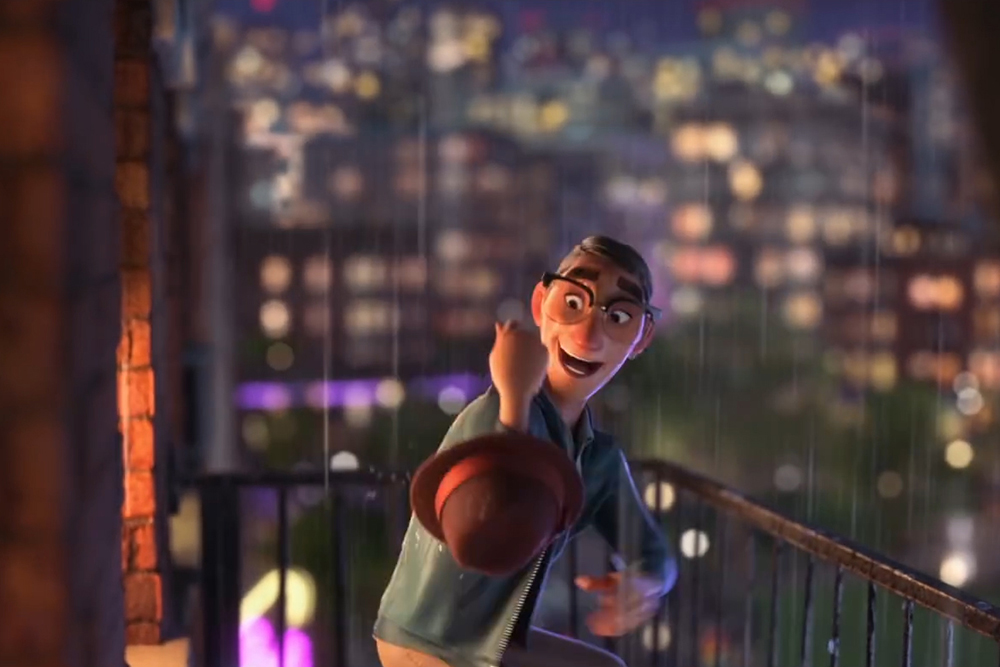
Derek Hough : Um… Aww, man, I can't wait to go watch it again and look for all those things. Uh, [LAUGH] it's gonna be so g-… Uh, well, I mean, you kind of-you kind of touched on it right now. But what cities did you look to, you know, modeling the digital city on?
Zach Parrish : You know, [they?] did a lot. So, for me, growing up again, Midwest, Chicago is a huge reference point for me. And so, the bridges and things like that, are more Chicago. We looked at a lot of-of New York, obviously, as kind of a-the quintessential American big city. and then also Los Angeles, you know, pullin-pulling inspiration from, uh, Seattle and Santa Monica and things like that for the-the pier and the, uh, Ferris wheel and things of that sort. We wanted it to feel like every big city and no big city at the same. So that it was kind of Art and Dot's own little world.
Derek Hough : Yeah, uh, it's-I'd say w-it-yeah. It was beautiful. I mean, it-it-this is-this is-question's for Pinar. may-many [INAUDIBLE] many of your past jobs are movies with a lot action sequences. This is way more emotional. how did you prepare for making the music for this?
Pinar Toprak : before I was doing a lot of action, I did a lot of emotional stuff. so, I mean, for me, it's-it's really, I don't know. I mean, I-I love writing. I have a bit of a musical ADD, I think. So, I need to be writing different styles, different genres. Uh, I need to be doing different things. Uh, but it all comes to the heart, you know. I mean, in those action films. I mean, in Captain Marvel even. So, to my scene-in some of the scenes I loved writing the most are really the m-the m-quieter, more-more intimate scenes. Because that's where we connect, you know, our-the-the heart to the aud-of the audi-audience. So, that comes easily, you know. Once I actually figure out. And-and this film was just so-you don’t have to search hard for it at all. It's heart all over the place. [LAUGH] So, it was just really, uh, making sure that it-it comes out-comes across in music. And it's just really, does it justice and, you know, explains their connection in a-in a beautiful way. And also still making it fun. You know, there, in-in the-in the apartment scene where he's, you know, browsing through the channels… It's-it's tricky making, you know, as he's changing the channels to hit all of those things and still making it sound like if you just listen to the track on its own, it still makes sense. Even without [some?]…
Derek Hough : Mm-hmm.
Pinar Toprak : So, uh, there-there were a lot of tricky things to make-to still hit everything. But, still capture the emotion, the emo-motional [arc?] overall. So, it's really fun.
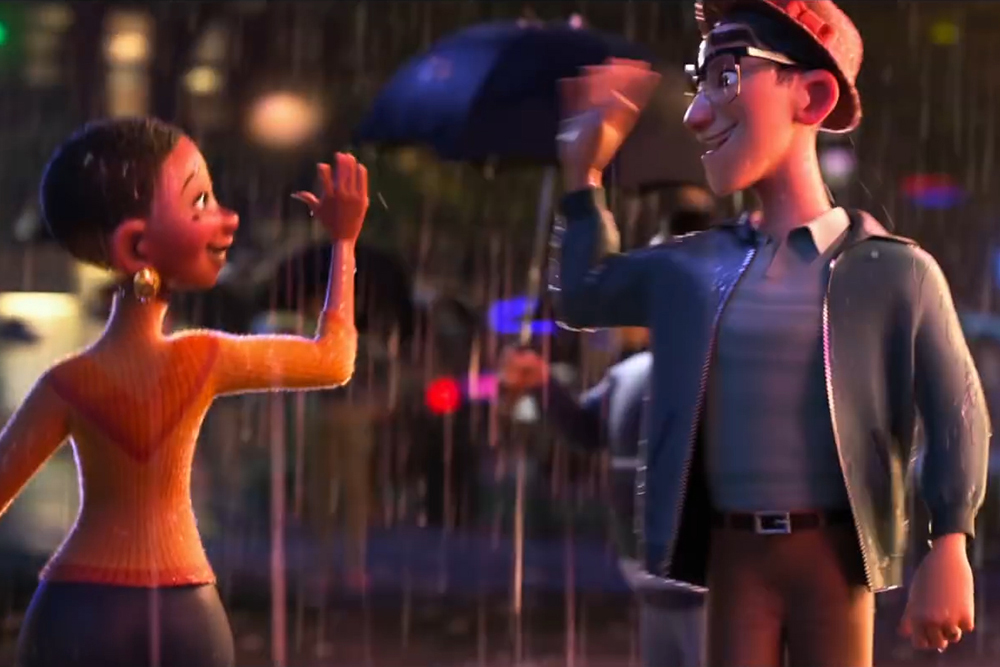
Derek Hough : It's funny you mention that. I s-one of the first, 'cause I had noticed when I was watching it was that moment where he's, you know, in his-the Lay-Z-Boy chair. And it's, you know, he's-he's dancing but it's more movement. But it's at that little accent where he's like d-d-d-d-d-da. Just little movements. Really small details but just so impactful and, and just the music together. In that moment, I was like, okay. I was already-I was already like, okay, so this is what this is gonna be like. Okay, I'm excited to see this. Um…
Zach Parrish : that was definitely a scene we-we went around and around on-on quite a bit. Because it really needed to set-up a lot. You know, it needed to set up both-both the world and kind of the scale and the youth. But also the very specific conversational style that they're going to have. And it really laid the foundation for the rest. And so, I think I drove Pinar crazy with that scene. But, uh, it-it turned out so-so good. And it was so specific. You know, each, like Pinar said, every note had to be so specific. And we know that-we knew that Keone and Mari would do something to-to every one of those notes, too. And so, there was-there was such a-a coordination to that scene. Again just I think really sets up the rest of the film. So, I give all the credit to these guys.
Derek Hough : Yeah. And this, this question's for Brad. can you-can you walk through a day in the life of production? I mean, what would a typical day, you know, working on this film look like?
Bradford Simonsen : Well, that's a great question. in our-in our productions, we actually-they're kind of in phases. So, you start with the story phase. Like-and that's about sitting in a story room and working and really working that story together. And our really-our amazing development team sits with you, and works on it. And then, later, just a little later, maybe a few months later, once we're into production, we storyboard everything. And so, you're meeting and you're reviewing storyboards. Uh, and then you're deciding to send those to edit. And then a little later, once you have those reels, you're actually engaging in trying to figure out, okay, is this the movie? You're trying to find the movie in storyboards. And that's when-and these guys are all on the journey with us. And Pinar was-was writing music for us even before we had those boards. And then a little later than that, then we actually make, uh, animatics. So, Zach did this wonderful thing on this movie where we call it Q-Vis [PH], and we're trying to then take the story from 2D boards to 3D. And we try to look at that. And then, all this com-you know, continues to evolve as Pinar writes music. and then, uh, Keone and Mari did the choreography once we kind of had a locked cut and we know what it is. And while all that's going on, on a daily basis, we're meeting in the morning with our team, we're setting our goals. We're, uh, answering any questions, uh, artistically and then we're doing reviews kind of due through the day. And, at the end of the day, we touch base and say, what did we get done and how's it going. And then, we set the agenda for the next day.
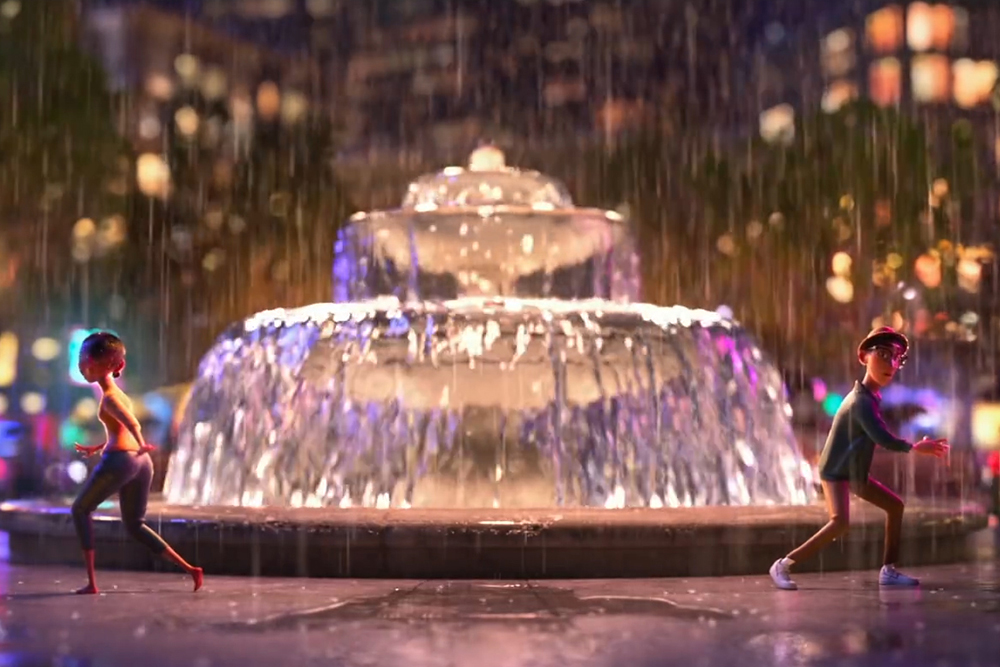
Derek Hough : I-i-it always blows my mind just-just the-the coordination and the-just everything that goes into making, uh, these films. It's-it's just… I-I-I think I can speak on behalf of pretty much th-everybody out there in this world that watches these and-and are just like jaw to the floor and just, uh, it-it-it's amazing. [I have a question. Do you ever?]-s-something you'd be like, ooh, this just needs a little bit more texture here? Or, like a little detail or something? And then, they go back and they-they kind of-they work on that?
Bradford Simonsen : Yeah, yeah. No, but Zach never has any notes. So, we right through. I’m telling you. Zach, do you wanna tell them a little bit [about that?]?
Zach Parrish : That's what I call that?. no, I always-I think what's implied there is I always have notes on everything. But I-I also think that's-that's very much kind of…
Bradford Simonsen : In a good way.
Zach Parrish : that's the culture, I think, at-at Disney in general. Is…
Derek Hough : Hmm.
Zach Parrish : Is-is it's a layering thing. Where everybody is incredible, but nothing-no one person just says, here it is, we're done. It's-it's-it's…
Bradford Simonsen : That's right?.
Zach Parrish : …uh, here's a pass. Oh, I think it could be better this way. Ooh, what if we did this? What if we did this? And so, even the development of-of Art and Dot, you know, we-we tried things that didn't-that didn’t make it on screen. You know? Our levels of stylization, different proportions, things like that, until we kind of refined it until we got right to where we-we wanted. And then, even once you get into a shot context, it's like, man, that one hair is really drawing my eye. I mean that one hair on this one scene. I mean, it really gets down to-to that level shaping the eyelashes. I mean, it's-it's really-it's really, really detailed pretty much everywhere. and I get, yes, as Brad said, down into those weeds.
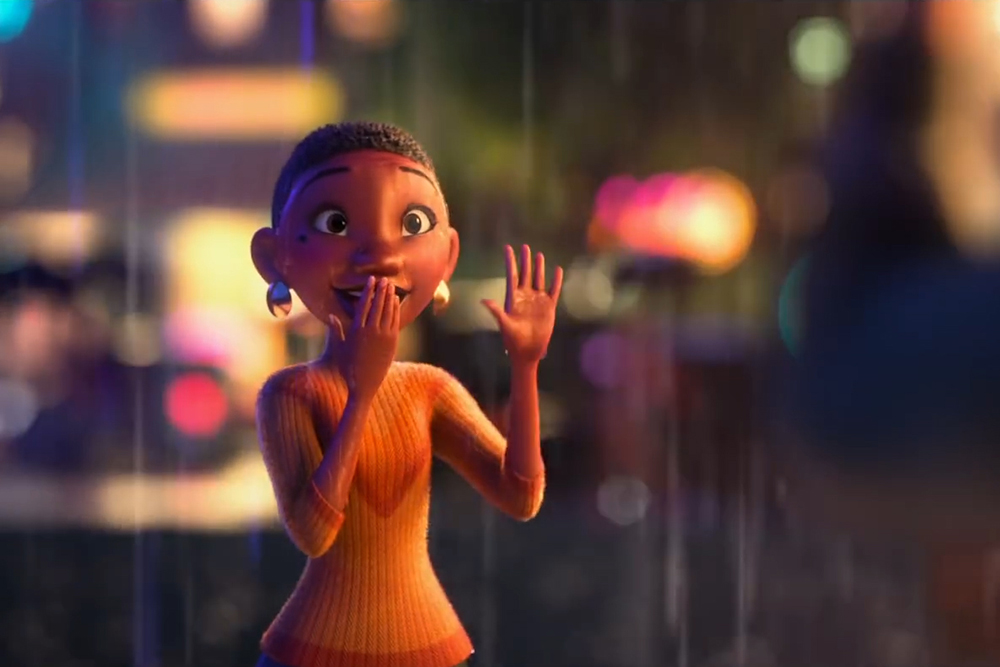
Bradford Simonsen : But-but I-but i-but I want to make it really clear, no joking aside, that is what makes these movies so great. And that is why Zach is such a great director, is he can go from the high-level into the detail contextually, and-and make that happen and articulate to the team…oh, you know, why. And he's super-open. And that's part of our culture as well. Is anybody on the team can make a note. So, if-if a person in lighting sees something, you know, in texture or anything, and they can say, Zach, what do you think about that? 'Cause I think we just did this it would make it sing a little more. And then, it's like, yeah, let's try it. So, we're very open to experimenting to find that-to make it all come together for that alchemy to happen.
Derek Hough : Yeah. -I just can, imagine that when it hits and you just get that feeling where you go that's it.
Bradford Simonsen : You do.
Zach Parrish : Yeah.
Bradford Simonsen : Yeah, you do.
Derek Hough : It's just…
Zach Parrish : There's so-there's so many of those moments through the-through the course of production where you see stuff. You know, you're like whoa. Uh, awesome. Yeah, let's do [more?] of that.
Derek Hough : That is cool. That I love that so mu-well, I-we-we only got, uh, time for one more question. But first, uh, Keone and Mari, we're going to let you guys get settled and-and get ready for the big finale. so thank you guys. We'll see you guys in a few minutes. Let you get prepared, uh, for the dance. so, one last question for you, Zach, Brad, and Pinar. Uh, besides enjoying the [present?], what do you hope children watching this short take away from this?
Zach Parrish : Mm, so-so, for me, it-there-there's always been kind of a-a layered feeling to it. I think that, you know, the main [uniting?] premise is really that like, you know, being-being present, not being focused on the past, not being, you know, stuck in the future, worrying about the future. But I, also, from the beginning, I always said to my wife, I really hope that-that younger kids, especially, watch this film and realize that they're parents were kids once. That their grandparents were kids once. And to become curious about-about what that was. Because I realized, you know, in the process of making this film how much I had missed and how little I had asked about my own parents, my own grandparents. And-and so, it has really prompted me to try to like get as many of those answers as possible. And-and to really see them as-especially now. I just had a-just had a kid. A couple months ago. And like, realizing that they were kids when they had kids. And-and-and the-the whole layer of emotions that they've gone through. So, I-I really hope it inspires people to look at their families and people in the lives in a different way.
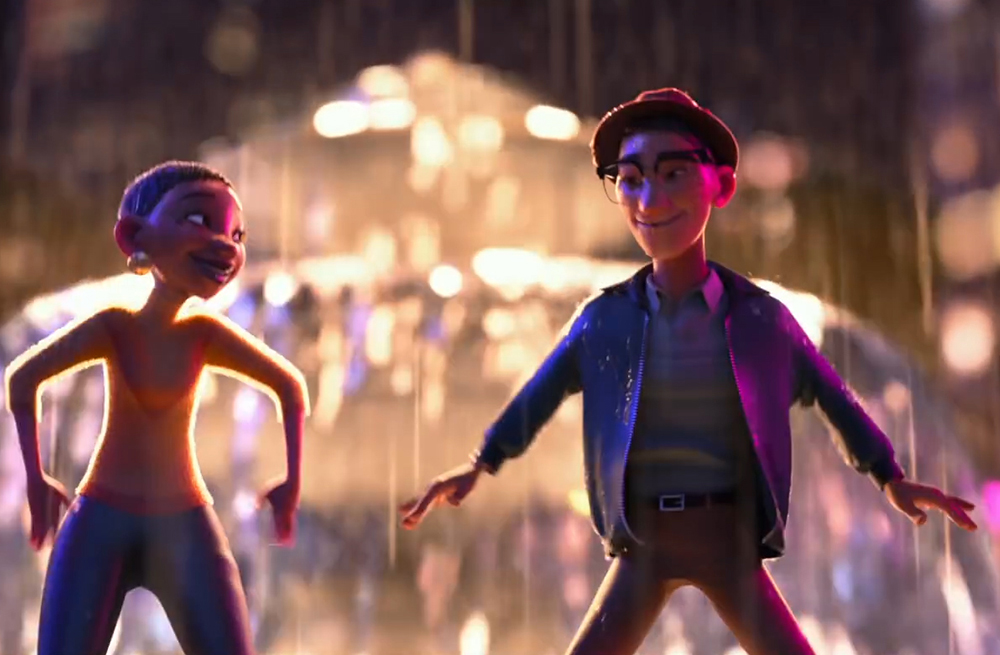
Derek Hough : Absolutely. And, you know-but I-I-I always say, you know, one of the fastest ways to sort of bring a smile to, you know, a loved one's face is to start dancing with them. You know?
Zach Parrish : It is.
Derek Hough : If you grab your-grab your mom or your-or your loved one or your grandmother or grandfather and-and just start-move and dance with them. And just watch the smile form on their face. It's one of the most beautiful moments you can have, you know, connections. And, you know, while I was watching this-when I was watching this, I got extremely emotional. Obviously, and as well as I'm sure everybody will when they watch it. you know, my grandparents, they danced every single morning, and, up until my grandpa passed away. And it was sort of a way that they connected with each other. And they, loved each other. And it was just a-it was-yeah. It was just beautiful. You guys just did such a-such a sensational job. And-and I just want to thank you guys for creating that piece of art. And, just beautiful. and now, we have got something really, really special for you all. live from their studio in San Diego, Keone and Mari are going to [show you?] in just a little [some?] choreography they created for Us Again. Take it away, guys. Oh, my gosh. First of all-by the way, you guys are so good. Amazing. And you know what that just reminded me of though? It just reminded me of-first of all your style so brilliant. But also, your textures. Your dancing, the textures in like, the-the-the staccato movements and the slow-moving movements and the-the-the liquid. Like, I guess animating that, I mean, that must have been a challenge to-to emulate your guys' style.
Zach Parrish : It's made for animation. It's absolutely made for animation. That was what we said from the very beginning is it-is-it's perfect. It's absolutely perfect in every way. Because something you're always looking in your animation is that texture and is that rhythm. And it's just-it's there in spades. And so, the reference was just so much to-to eat into. It was amazing. And that was so much again. Holy crap.
Derek Hough : I know. By the way, it's-it's funny. Just watching that, I was like, it-it was like-I-i-you guys-and you guys nailed the animation. You know what I mean? Like, looking back and now seeing the short and then seeing them, I'm like, y-y-it just nailed it. I recognized it immediately. It was just fan-phenomenal. well, thank you all so much. This was-been such a treat and such an honor to be here with you all. And, uh, thank you, Zach, Bradford, Pinar, Keone, and Mari, thank you all for joining us. and thank you all who are watching right now. Thank you all for joining us. Us Again streams exclusively on Disney Plus beginning this Friday, June 4th. You must check it out. It is an absolute dream to watch. thank you all for watching.
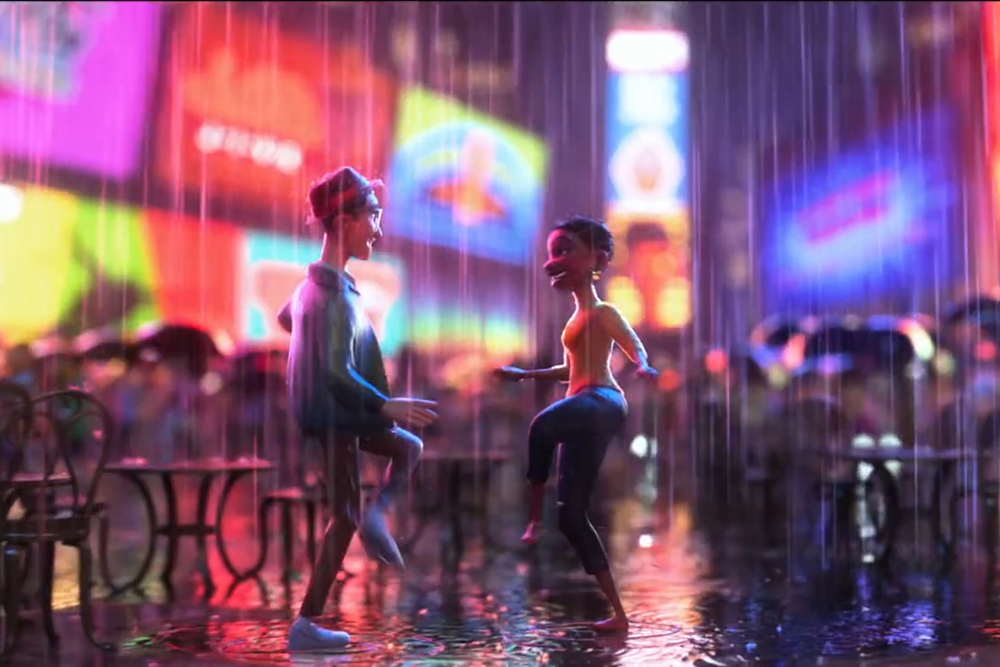
Synopsis :
In a bustling city, an elderly man and his wife rekindle the passion of their youth for one night through dance.
Us Again
Directed by Zach Parrish
Produced by Brad Simonsen
Written by Zach Parrish
Music by Pinar Toprak
Edited by Jesse Averna
Production companies : Walt Disney Animation Studios, Walt Disney Pictures
Distributed by Walt Disney Studios Motion Pictures
Release date : March 3, 2021 (Netherlands), March 5, 2021 (United States)
Running time : 7 minutes
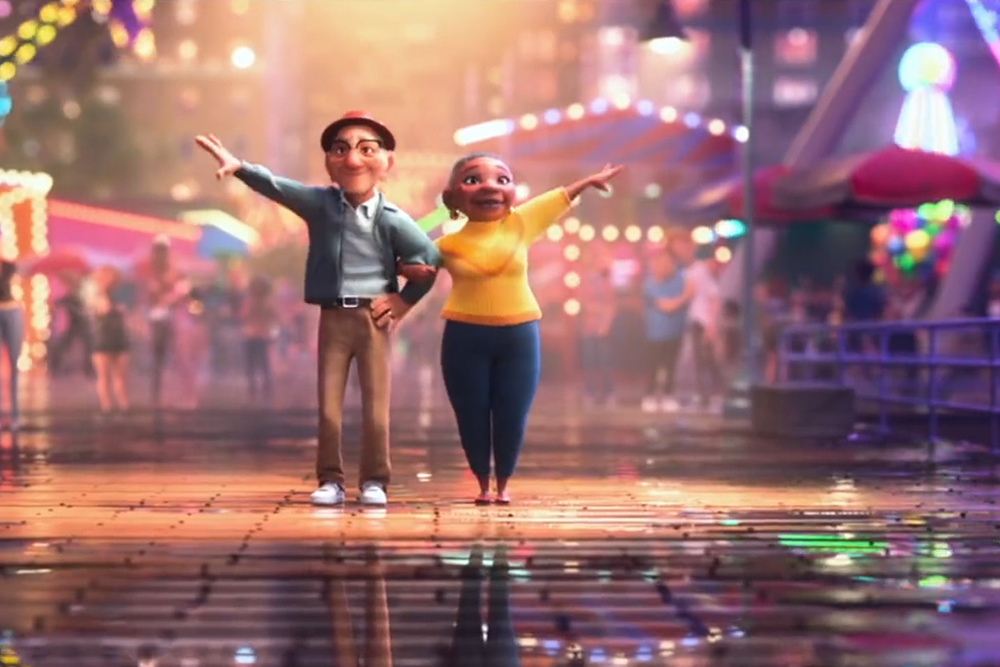
(Source : press release)

